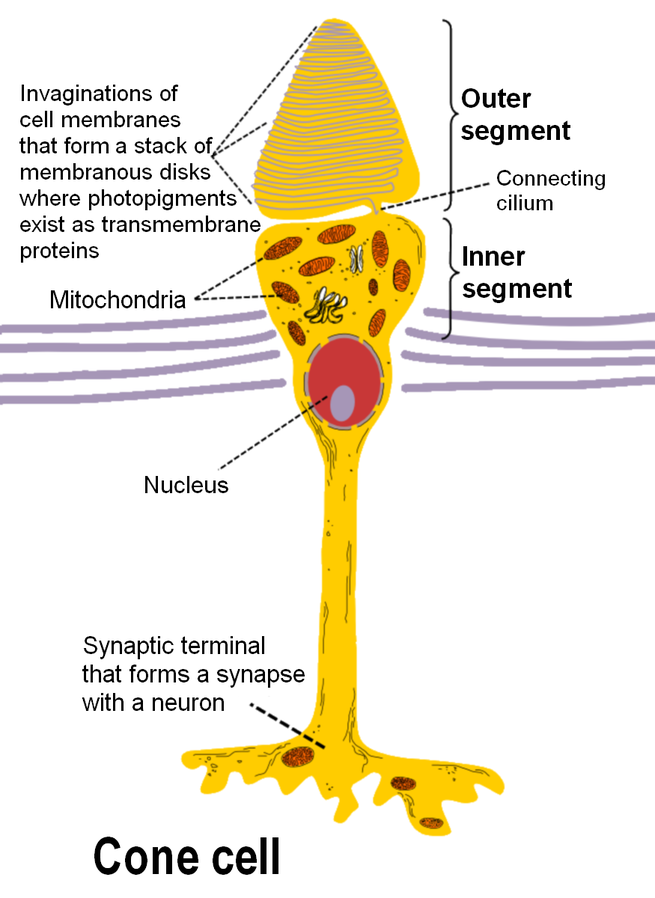Hereditary retinal dystrophies
2. Cone-rod dystrophy
A hereditary disease that causes a progressive deterioration of the photoreceptor cells, initially cones. In later phases, rods could also be affected.
Symptoms include marked photophobia (when a person with cone dystrophy is exposed to light, functioning rods and cones become saturated with light, causing intense discomfort), reduced color vision and visual acuity (cones are responsible for color vision and reading and seeing details), followed sometimes by nyctalopia and reduced peripheral vision.

There is a wide variety of phenotypic expression in this group of diseases, which means that although vision loss over the years is common, it can be variable in severity and speed for each individual. It is very rare for a patient with cone dystrophy to become totally blind (not seeing anything, not even light); however, it is common for them to become legally blind, that is with vision lesser than 0.1.
The visual quality of a patient with cone dystrophy depends a lot on the ambient light. In bright light conditions it tends to function worse than in dim light or when wearing glasses with solar filters.